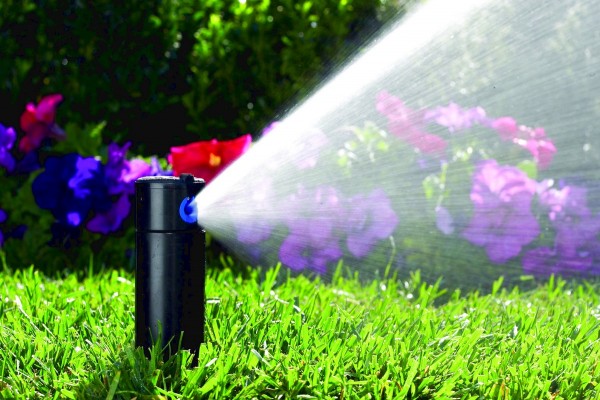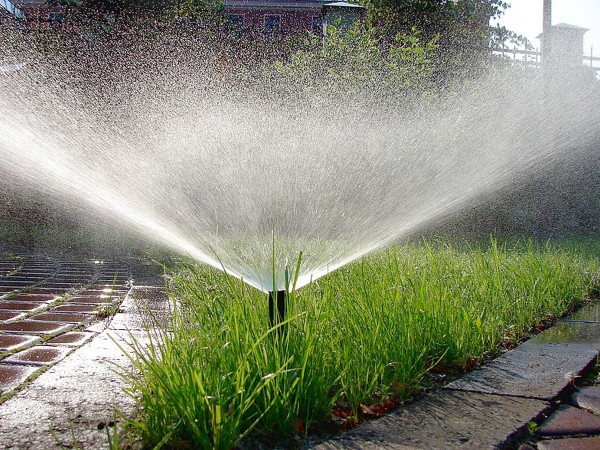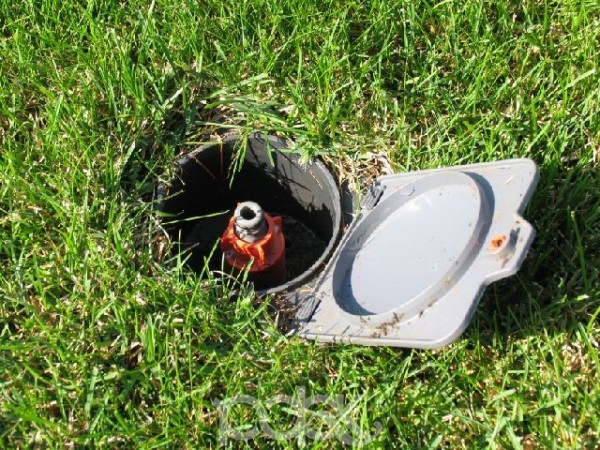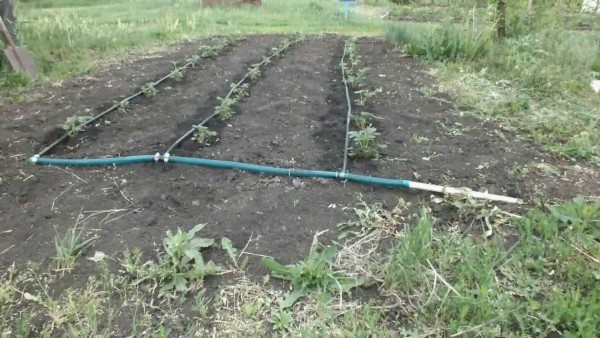What are the best irrigation systems for summer cottages and gardens
Content
System Description
Any set for automatic watering of a vegetable garden consists of a water supply source, main pipes, starting valves and a mechanism for bringing moisture to the roots of plants. The source of water supply in the country can be a well, a well, an ordinary water supply - what is in the country. The only “but” is that many plants are capricious to the temperature of the water for irrigation, and therefore, between the source itself and the pipes, they usually mount an additional tank with their own hands - a closed barrel in which the water for irrigation in the summer cottage is heated and settled during the day. A pump is useful for filling the barrel.

For additional water purification - it is useful both for plants and for the durability of the entire irrigation system - a filter is installed, usually on the main pipe coming out of the barrel, next to the starting valve. Pipes can either be laid on the ground or raised above ground level on special do-it-yourself guides, or dug into the ground. It depends on the desire of the summer resident and the size of the garden. Depending on the number of beds, you can do the branching of the main pipes to the required number of directions with your own hands using connectors and tees. Water supply mechanisms are used directly on the beds.
What are
Irrigation systems are different depending on the way the water is supplied. This can be spraying, subsoil irrigation, or drip irrigation. Each method has its own pros and cons in terms of convenience, safety, and economy. Sprinkling (also known as sprinkling) is most often used for watering lawn grasses, but is not very suitable for a garden or a summer cottage. In this case, a sprinkler is installed at the end of the main pipe, from which a fountain of water beats under pressure.

In more expensive kits, the sprinkler rotates, providing watering in a circle, and the pressure force also changes, thus capturing the entire area. But such watering can only be applied in the early morning or late evening, in order to avoid burns of foliage, which will necessarily be on hot sunny days, since water droplets, remaining on the plant, work like lenses. In addition, this method is more suitable for plants with developed surface roots. And, finally, unlike systems with water supply directly to the roots, sprinkler irrigation is not suitable for applying fertilizers in liquid form - you have to work hard with your own hands.
Subsoil watering with optimal settings can be economical, but the problem with this method is the laboriousness of the do-it-yourself installation. The pipes must be dug into the ground to a depth of about 20-30 cm, which means that such a structure is mounted on a summer cottage once every several years. Which, alas, does not suit the climatic conditions in almost the entire territory of our country - the pipes simply will not withstand the winter.
Video "Installation and installation of automatic irrigation"
In this video you can see how the installation and installation of automatic irrigation for a summer cottage is going on.
Choosing the best
Therefore, the drip irrigation system for the garden should be considered optimal in our latitudes. This is a method in which branches of a drip tape are connected to the main pipes - a special type of hose made of soft plastic, porous inside, with numerous holes from which water oozes. With the correct setting and the integrity of the drip tape, the soil near the plant will always be moist, but there will be no puddles on it. When installing drip irrigation on the site with your own hands, it is recommended to equip each section of the drip tape with a separate trigger valve, so you can regulate the watering of each garden bed on the site.

How to do it yourself
There are various drip kits on sale, designed for a bed of 30, 60 or 90 plants, for a water loss of 2 to 9 liters per hour. Some systems are equipped with automatic sensors and turn on regardless of the presence of the summer resident on the site. Especially complex, but also the most expensive kits are able to adjust the amount of watering depending on environmental conditions. But it is not so difficult to assemble an automatic watering system for a garden with your own hands.
The first thing to do is to draw up a summer cottage plan with a detailed location of all the beds, heifers and perennials that need watering. However, it makes sense to install its own autonomous system in a greenhouse or greenhouse. The next step is the purchase of all the necessary components - main pipes made of dense opaque plastic, drip tape according to the number of beds plus a small stock, connectors and adapters of different diameters, taps. Further, the connection of the main pipes to the barrel or barrels of water. Then, connecting the drip tape cuts to the pipes. If the site has a slight slope, then the trick is to install the drip irrigation system - the pipes are laid on flat surfaces, and the tape can go downhill.

An important step is technical watering or flushing the system. All taps must be open and water must flow freely through the uncovered ends of the drip tapes. If clean water is flowing, then everything is in order, drip irrigation is ready to work. The last step is to place plugs on all the free ends of the drip tapes. Also, you can always make a semi-automatic watering system with your own hands using plastic bottles. Which system to choose and install on your site to get the highest yields, make it yourself or invite specialists - it's up to you.
Video "How to make a do-it-yourself drip irrigation system"
This video shows you how you can install your own drip irrigation system.
